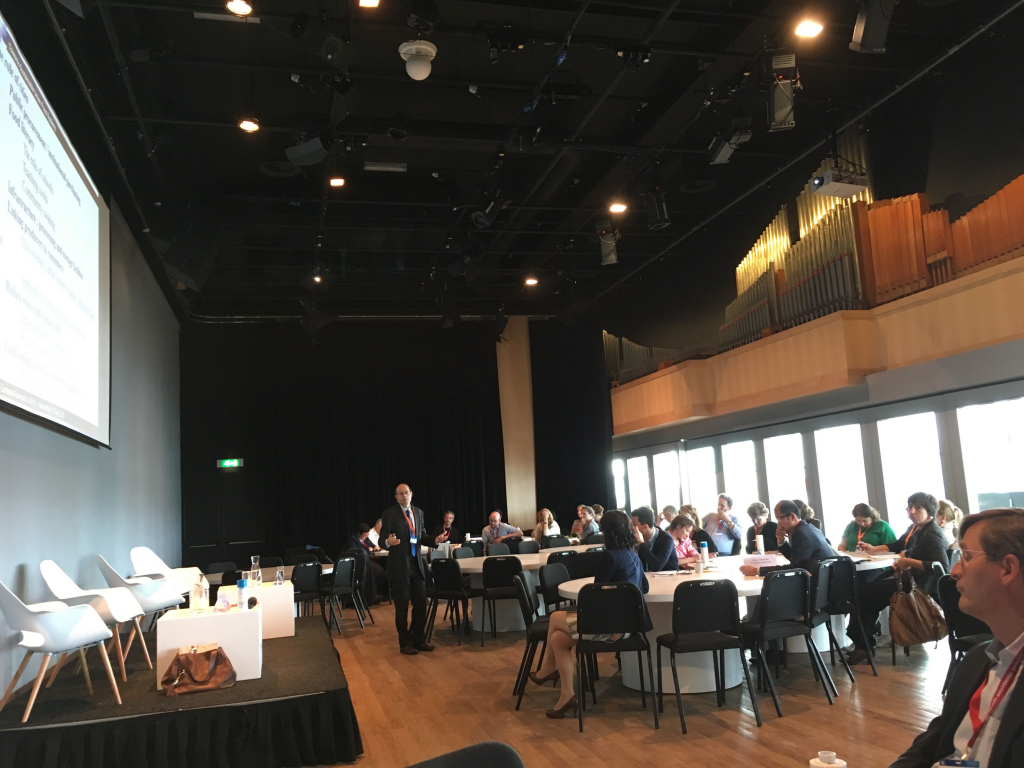How do we reconcile all of humanity’s demands on the land? This was the topic of a breakout session at the European Foundation Centre AGM.
A group of us settled down to chew on the topic of ‘land use, food, and climate change’ – no small issue when you think about the demands currently being put on land today and how far we are, on current trends, from reconciling the way we use land with our global commitments under the Paris Agreement to reduce global warming to well below 2 degrees Centigrade.
We ask a lot of the land. Agriculture provides 10-15 per cent of global greenhouse gas emissions, depending on how you count it, and 70 per cent of those emissions are just from livestock (not just methane from gassy cows: a huge amount of land is used to produce soy and corn to feed those same cows). Energy is also a growing share – most wastefully, to produce first-generation biofuels from crops, like corn and palm oil, that could otherwise be used to feed people.
Apart from the obvious – food for a growing global population—we also use the land to accommodate the demands of urbanisation, a place to dump our waste, and to provide materials and fibre for clothing. Land also provides essential ecological services—not least of which is its ability to soak up and store CO2 emissions out of harm’s way.
The one thing we can be sure of is that as population and economy grows, so too does consumption. If we’re going to keep global warming to safe limits, we’re going to have to meet demand for all that the land provides in radically different ways. A lot can be done to reduce waste—there were some great examples of supermarket chains reining in promotions that caused people to buy more food than they would eat, providing good and reliable information for consumers, getting public bodies to buy their food from sustainable sources, and increasing agricultural production through more intensive but more efficient processes.
But everyone agreed that all these solutions have their limitations. Increasing efficiency in intensive farming could lead to more population by societies of antibiotics. Appealing to consumers works for the minority of consumers who are motivated by ethical preferences, but for the majority it’s hard to compete with price.
Ultimately, we’re going to have to make the cost of agriculture products reflect their ‘true’ costs – their impact on the atmosphere, on marginal communities, on quality versus quantity of calories. To do this will, in turn, require changing a vast industrial system that has been built over decades to maximise agricultural production. This won’t be easy: the supertanker image invoked by Princess Laurentien in the plenary comes to mind once again.
A systemic approach is needed, with a scale of ambition that matches the size of the problem. One big idea was to create a science-based target for the agriculture sector to set limits for its impact on climate change and on health – a ‘2 degree target’ for food.
We were also inspired by the presentation of Prof. de Schutter [pictured above] from the University of Louvain, who spoke about the importance of involving urban communities in food production. We need a localised approach, using cities and communities to get informed, organised, and active to create a demand for food that is good for mind, body and planet. Food needs to be ‘democratised’, and cities are most in tune with what their citizens need and less driven by what large corporations want.
Thomas Legge, Senior Associate, European Climate Foundation






Comments (0)